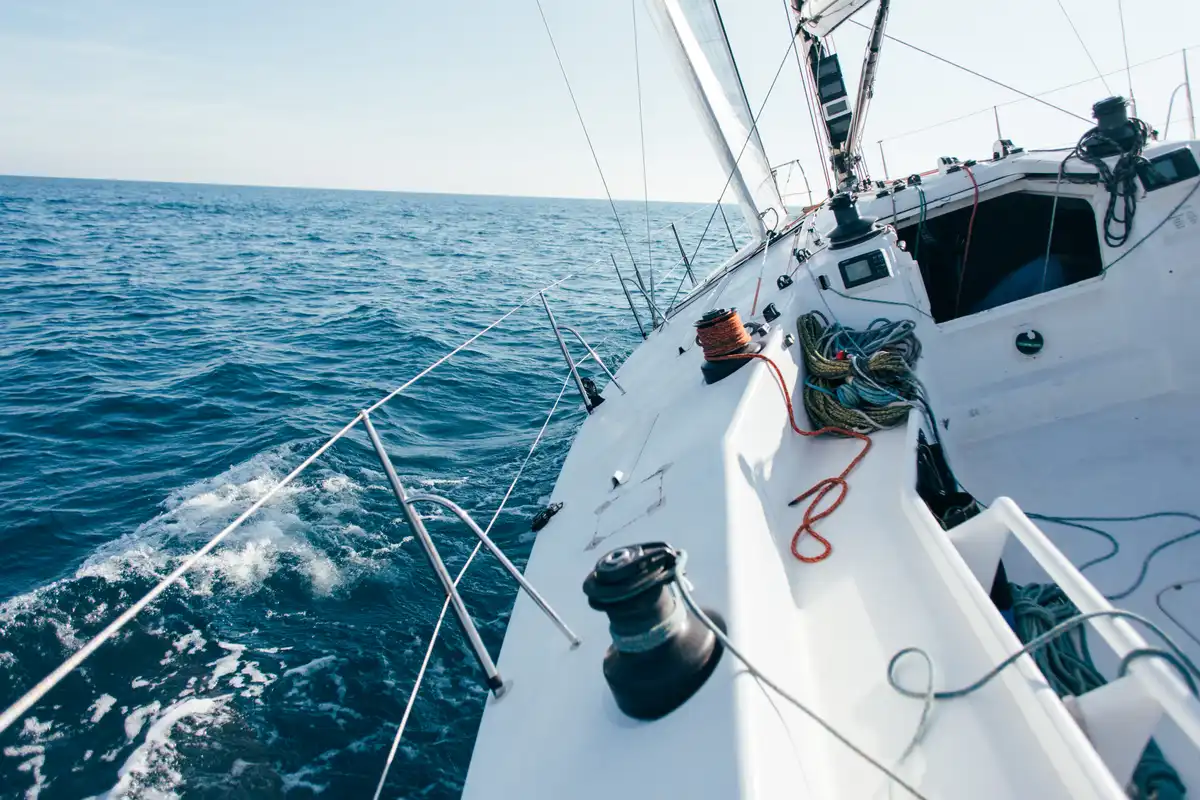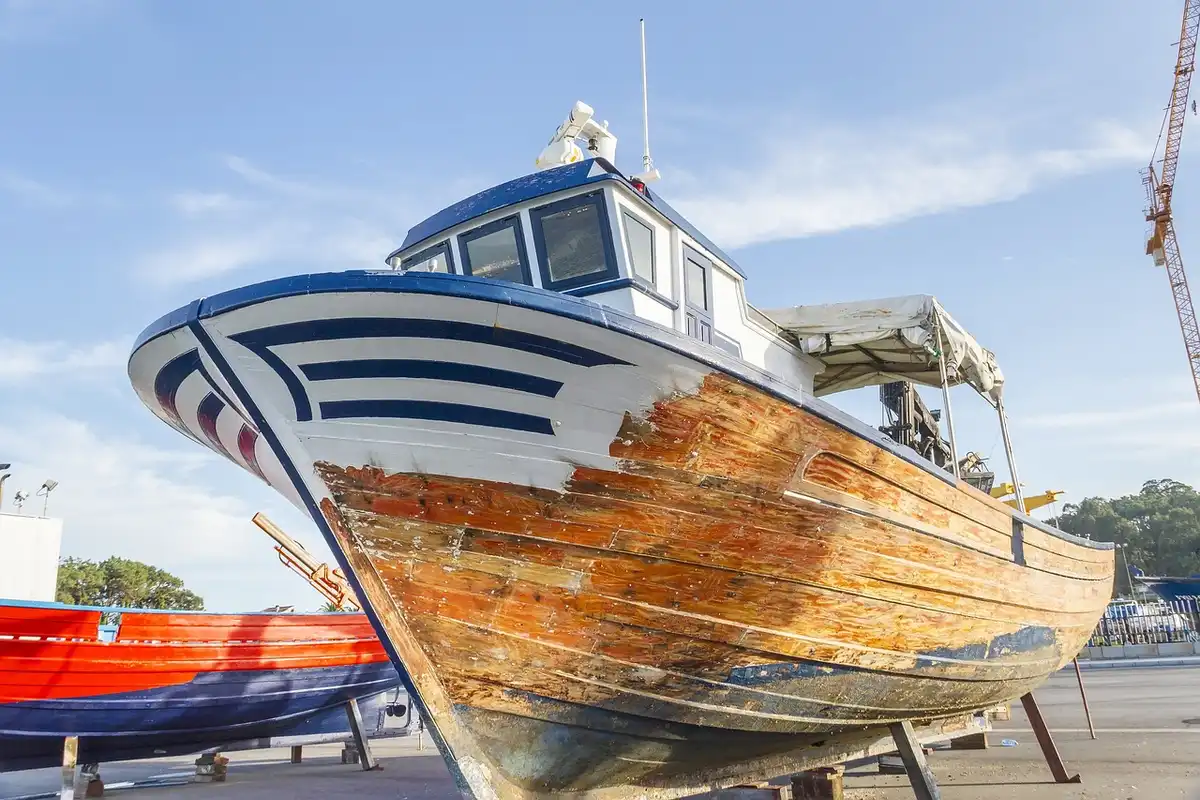
Introduction
If you're new to sailing, it can be a little intimidating. The wind is strong and unpredictable, the waves are unpredictable too but not as much so as the wind, and there's lots of water out there it's easy to get lost in all this!
But don't worry: we've got some tips for beginners who want to learn how to sail safely and enjoyably. We'll cover everything from knowing where your boat will go (and why) to keeping yourself safe when moving around on board. So let's get started!
10. Know the Winds
If you're new to sailing, it can be easy to get lost in all of the jargon and forget what wind is. Wind is a tricky thin there are many different types of winds, and each has its own characteristics. You'll need to know how to identify each type of sailboat so that you can make decisions about where and when to use them.
- Wind direction: This refers to the direction from which your boat is facing as it travels across the water (or sea). For example: "We're heading northward."
- Wind speed: The average speed at which air flowing through open spaces moves through an area; measured in miles per hour (mph). A more powerful gust will feel faster than one with less power behind it; this is why sailors sometimes use terms like "gusty" instead of just saying "strong" or "lively."
- Wind gusts : Stronger gusts move faster than weaker ones due to pressure differences between warm air masses above ground level (and cool ones below) causing them push against one another with greater intensity resulting in higher speeds/forces being generated within each column/section of atmosphere above ground level.
This causes considerable turbulence around objects caught up within these columns making them difficult if not impossible for vessels travelling through them due their size limitations imposed by current velocity calculations based upon weight distribution among various components such as hulls etcetera."
9. Leave the Dock with a Plan
The first step in any sailing adventure is to understand where you are going, what the weather looks like and your boat's capabilities. Know these things before boarding the boat, as they will help you make decisions as you go along.
The second rule of thumb is to stay away from overreaching on a trip that means don't go out too far or do something beyond what your boat can handle. A lot of people make this mistake when planning their first trip, but it's better not to take risks than have an accident happen due to inexperience or lack of preparation.
If something goes wrong while navigating through rough seas (or even calm ones), always check with someone who knows how well equipped their vessel is for dealing with such situations: perhaps another sailor has already gone through these waters before!
8. Watch Out for Fishing Lines
Fishing lines can be dangerous to sailors, and they can cause serious damage to your boat. They're also a hazard to other boats and the environment around you. If you're sailing in an area where fishing is common, it's important to know how to avoid fishing lines.
7. Watch Out for Buoys
Buoys are used to mark the edge of a channel or other navigational hazard. They're usually red and white, with a number to identify it. You should always pass buoys on the same side as they are marked; if you're in doubt about which side they'll be on, ask someone who knows what they're doing!
Buoys are often used at anchorages where you might want to anchor overnight for example, if there's no marina available nearby and you don't want to risk getting stuck out at sea overnight because of weather conditions (and yes, this has happened).
6. Don't Cross Wakes
You don't want to cross the wake of another boat or vessel. It's a natural reaction when you see someone coming up behind you but it can be dangerous and even deadly if done without caution.
If you're sailing in an area where there are other boats, keep your distance from them so that they don't have to slow down for you (or vice versa). This will help avoid collisions at all costs!
Don't try to outrun waves either; instead, make sure they're passing under your keel so that they don't buffet the boat with their energy when passing overhead - this could cause damage over time due to stress caused by these waves' impact on your hulls' integrity as well as its structural integrity overall."
5. Sailing Takes Patience
Patience is important when learning to sail. It's also important when you're learning to sail with other people and in different weather conditions, wind conditions and more.
Patience is essential because it helps you to stay calm, which makes it easier for your body and brain to handle the stress of being at sea. If it's not possible for you to stay calm while sailing then perhaps this isn't something that would interest you at all!
Keep Your Boat Clean
- Keep the deck clean
- Keep the cabin clean
- Keep the engine compartment clean
- Keep the battery compartment clean (especially when you're not using it)
If you want to keep your boat in good shape and safe, it's important to keep all areas of your vessel well maintained. The deck is where most people will spend time on their boats, so it's crucial that this area be kept clean and clear of debris or dirt. You'll also want to make sure that there aren't any cracks or holes in your hull these could cause leaks during rough weather conditions!
Likewise, if you're storing items aboard such as anchor lines and other gear, make sure they aren't causing damage by letting them hang up against delicate areas like windows or screens around doorways where they could chafe against them over time."
4. Have Multiple Tools Onboard
- Have basic tools on board.
- Have safety equipment onboard.
- Know how to use them and where to store them.
3. Always Practice Safety First
It's easy to get caught up in the excitement of sailing a boat, but it's important not to forget about safety. Always practice safety first.
- Wear a life jacket: this is especially important if you're using a sailboat or motorboat because they can tip over easily if there are waves or strong winds.
- Have a safety kit on board: this should contain tools such as pliers, knives and flares in case anything happens. It should also include ropes, anchors and ladders so that everyone can escape safely at sea (and don't forget your flares!).
- Always check the weather before going out on open water: check local forecasts as well as offshore forecasts from nearby towns or cities like Miami Beach where we live! If there is bad weather coming then don't go out unless absolutely necessary and even then do everything possible not just so but also because it's fun too :)
2. Know Your Way Back to Land
- Know the way back to land from where you are.
- Use a compass to figure out where north is, and then find your way using it.
- Use a GPS or map and plot your course based on that information.
- Make sure that you have accurate weather forecasts for your route in case something goes wrong with the boat (like if it sinks).
If possible, bring along some sort of emergency radio device so that if something does happen during transit, someone can help get them safely back home again! It's also helpful if there's at least one other person onboard who knows how to sail it'll make things go much smoother when trying to navigate tricky waters like reefs or other obstacles such as whales swimming nearby!
1. Sailing can be very fun or very dangerous. Be safe and smart out on the water.
Sailing can be very fun or very dangerous. Be safe and smart out on the water.
- Stay safe! It's important to know your way back to land, even if you're just going for a short sail down a nearby creek or lake. Don't let yourself get lost the best way to do this is by practicing safety first, so that you know how to find your way back home without getting lost in unfamiliar territory (or worse). It's also good practice for when you're out on longer trips with other people who might not know where they're going either!
- Practice makes perfect! You'll need some time before heading out on any longer sailboats or yachts in order to learn how everything works together properly; this includes learning about all of the different controls such as ones used for steering/ruddering purposes etc., as well as learning how things work under water through trial-and-error methods until eventually coming up with one method which works best at achieving whatever goal needs doing most urgently right now."
Conclusion
We hope these tips will help you have an enjoyable, safe sailing experience. Remember: the best way to stay safe on the water is to always practice safety first!

